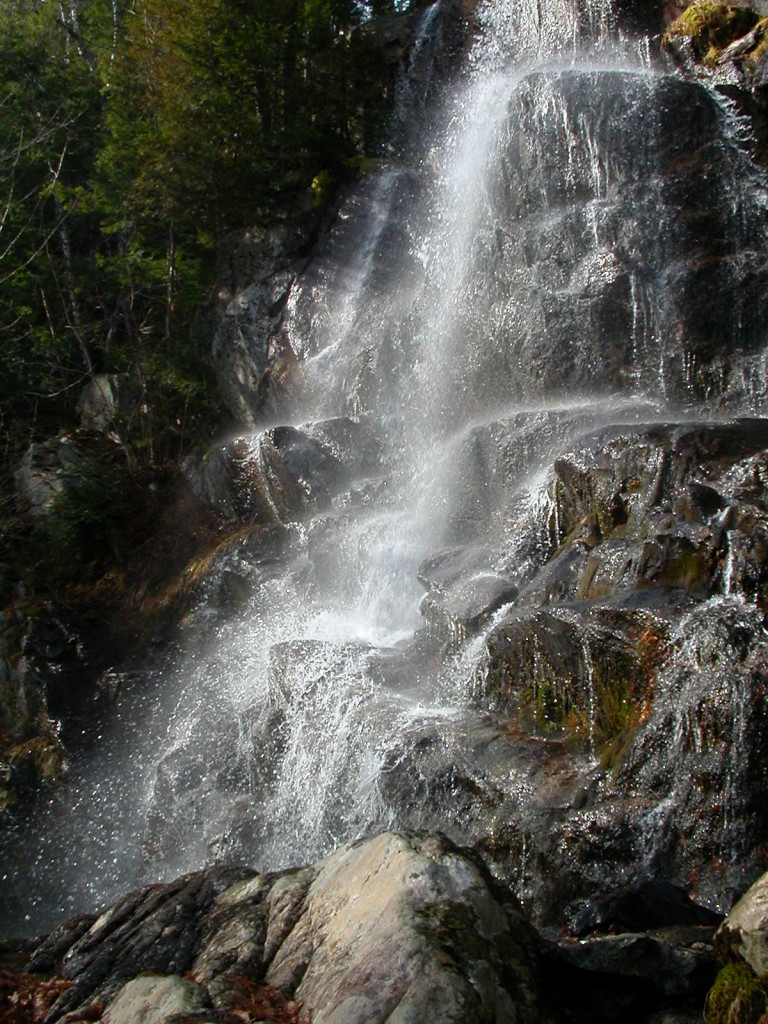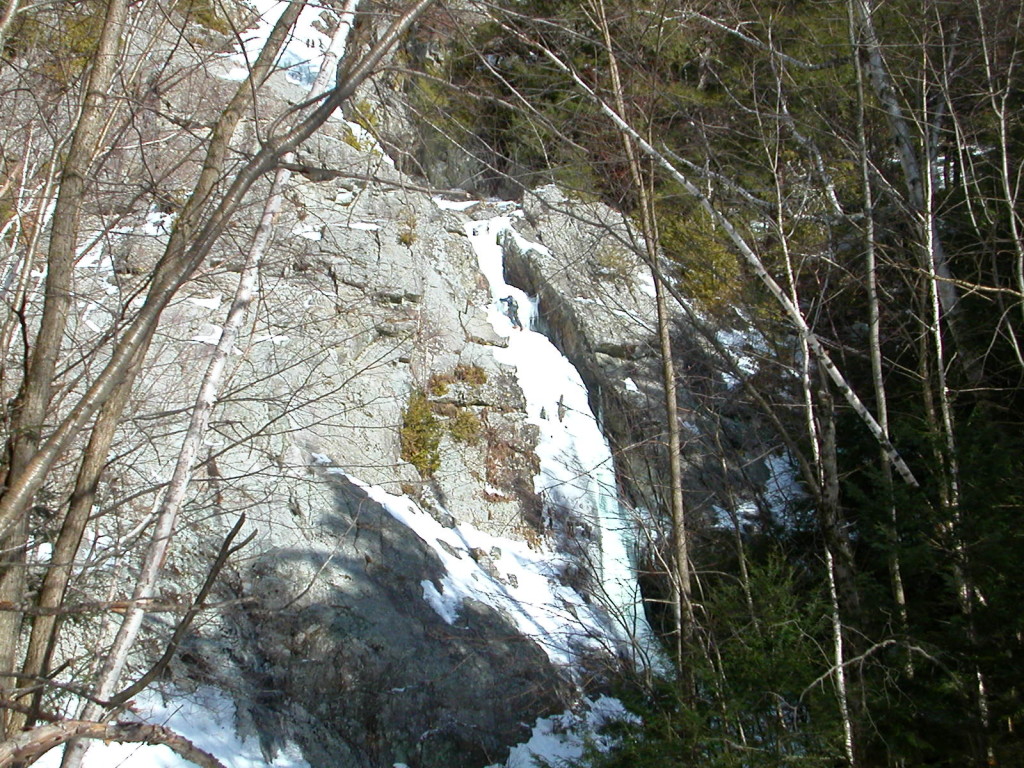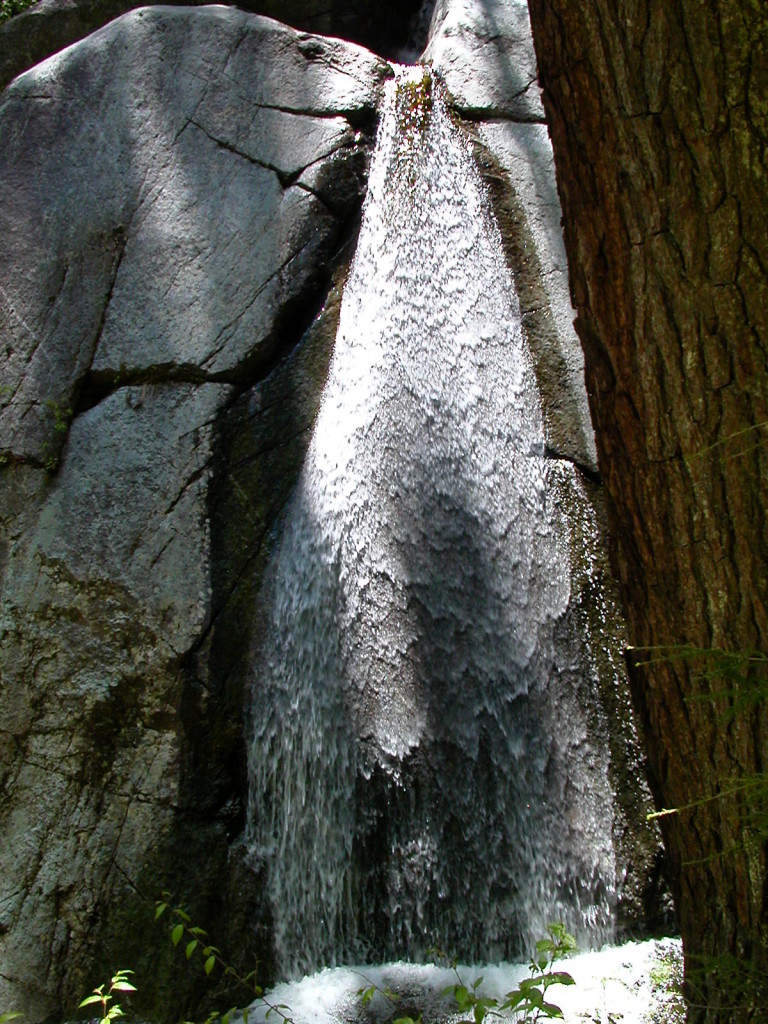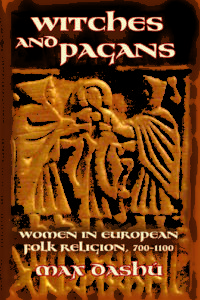






Year: 2017
Witches and Pagans: Women in European Folk Religion, 700-1100 (Review)
May 26, 2017 Max Dashu has posted significant excerpts of her multi volume project on the history of witchcraft at her Suppressed Histories website for years, and publication of her research in book form has been eagerly anticipated. This first installment (which Dashu refers to as Volume VII) covers the years 700 to 1100 – a good choice, because this period is critical to understanding the peak of the witch craze in late medieval and early modern times. This is also a period in European history where not a lot of information is available to the average Pagan.
Max Dashu has posted significant excerpts of her multi volume project on the history of witchcraft at her Suppressed Histories website for years, and publication of her research in book form has been eagerly anticipated. This first installment (which Dashu refers to as Volume VII) covers the years 700 to 1100 – a good choice, because this period is critical to understanding the peak of the witch craze in late medieval and early modern times. This is also a period in European history where not a lot of information is available to the average Pagan.
Dashu is explicit that she is writing for a lay audience, but this is a thoroughly researched and referenced work, with a large bibliography and over a thousand footnotes. There are some readers who will think she excessively belabors her points, but there is so much misinformation out there, often written by slipshod academics and well-intentioned Pagans who rely on these academics, that a solid scholarly work was sorely needed. The conclusions Dashu reaches will not be startling to better informed researchers inside and outside academia, but the weight of evidence on which she bases her findings is gratifying in this highly contentious field. No doubt there are many who will be surprised.
The book utilizes linguistic analysis, place names, archaeology, folk customs documented by clerics, early theological treatises on demonology and witchcraft, and mythology of pagan origin recorded by Christians. Dashu is well aware of the shortcomings of each of these methodologies and discusses them frankly. Still the amount of evidence, from many types of sources, leads to well grounded conclusions. This book mentions in passing some of the biases which hamper academic research on witchcraft, leading to often repeated yet erroneous beliefs that have seeped into Pagan discourse.
Dashu informs us that Pagan beliefs and shamanic practices not only survived well into the Middle Ages in supposedly Christianized regions, they were widespread and deeply adhered to, particularly by the lower classes. Shamanic practices and worship of goddesses and nature deities were equated with witchcraft and devil worship by clerics and formed the basis for persecution. Though trials for malefic sorcery also existed in pagan Rome, the intensity and tone of the Christian persecution was different and significantly broader, including for example healing and divination. Aristocratic government and church leadership were intricately connected and both used dispossession of pagan culture along with persecution of witches as a way of solidifying power. The healers, diviners, and keepers of tribal history known as witches were overwhelmingly female, and witch persecutions were part of a pervasive Church strategy to further subjugate women, who were already dominated by men within their pagan cultures. Dashu firmly establishes that for centuries the targets of the witch hunts were shamans, usually female, and that the purpose of witch persecutions was to establish Christian hegemony and solidify aristocratic power.
Dashu also attempts to piece together what those pagan belief systems and female shamanic practices that were under attack actually were, and here her findings must be treated as incomplete. She focuses a great deal on Germanic cultures, and practitioners of the various Germanic traditions will find a wealth of information here. She discusses the importance of the distaff in women’s mysteries and the Norse practice of “sitting out” to achieve psychic insight. She explores the little that is known about northern European goddesses. She devotes an entire chapter to the important Icelandic poem The Volupsa. This is not, however, a definitive look at any Norse tradition, and really to have attempted that would have taken this book too far afield. I have noticed a tendency in witches in my acquaintance to devote their reading solely to authors like Dashu who approach witchcraft from a solid feminist perspective. There would be nothing wrong with that if there were more Pagan writers with a true understanding of feminist theory, but there are not enough of us around to be so selective. If the material here sparks some new interest you will need to draw from a variety of sources on the runes and Norse literature. I was particularly dismayed to hear a friend say she was inclined to cut out any reference to the god Odin from her practice after reading this book. I am a Dianic priestess, and it is more than okay with me if a woman only wants to worship goddesses, but I think we must remember that male as well as female archetypes become distorted in support of male dominance. It is important that we recognize patriarchal bias in our Pagan heritage, but it is equally important that we do not stop there.
Witches and Pagans is slow reading and cannot be tackled in one or two sittings. Dashu’s writing style is clear and straightforward, but the nature of the material is that it is dense. An index would be helpful. There is a web address for an index in the book which took me to a 404 error page. There are quite a few line drawings in the book which add a great deal to the text. This is a great resource with a lot of helpful information. I hope we will not have to wait too long for the next volume of “The Secret History of the Witches.”
More on Recovery
May 19, 2017Personal Update
May 12, 2017
By the time this is published, I will be recovering from surgery for a torn knee ligament. It’s not nearly as big a deal as knee replacement, but I’m not sure what the time frame for my recovery will be. I could be blogging again next week, or I could be as elusive as this bittern.
At any rate, I am looking forward to happier trails. Blessed be.
The Holy Beech
May 5, 2017 In the mature hardwoods of the Adirondacks, the American Beech reigns supreme. It is a majestic tree, stretching 80 feet or more and providing the dense summer canopy of the forest. The wood of this tree is also dense, and the trunk grows straight, with smooth gray bark. In the fall the golden leaves of the Beech offset the bright red of the many varieties of maple that grow here. While the forests at mid-elevation are described as Beech/Hemlock/Yellow Birch/Sugar Maple forests, it is the Beech that predominates the longer an area of forest is undisturbed.
In the mature hardwoods of the Adirondacks, the American Beech reigns supreme. It is a majestic tree, stretching 80 feet or more and providing the dense summer canopy of the forest. The wood of this tree is also dense, and the trunk grows straight, with smooth gray bark. In the fall the golden leaves of the Beech offset the bright red of the many varieties of maple that grow here. While the forests at mid-elevation are described as Beech/Hemlock/Yellow Birch/Sugar Maple forests, it is the Beech that predominates the longer an area of forest is undisturbed.
Forest animals from Red Squirrels to Black Bears depend on the fruit of the Beech for survival. The tree produces two small triangular nuts encased in burry shells. The Beech fulfills a core sustenance role for wildlife played by the White Oak in warmer climates. Like the Oak, the Beech hangs on to its dry leaves throughout the winter, letting go only when spring arrives and its long spear-like buds emerge. The leaves are large, oval, and pointed, with toothed edges. This is a long-lived tree which bides its time in the shade for many years, shooting up quickly when a patch of sunlight emerges as another tree falls.
Though nature enthusiasts prize this beautiful tree, the lumber industry is equivocal about its merits. The wood makes beautiful furniture and durable blond flooring, but the trees themselves are susceptible to various diseases which are hard to recognize uncut. Beech is less desirable as cordwood because the wood takes a long time to season. Mostly the trees are left alone, which is just as well since they fill such an important ecological niche.
American Beech can be thought of as the North American equivalent of European oaks such as the English Oak. Both belong to the Fagaceae family, and according to Robert Graves much religious symbolism associated with the oak was transferred from the Beech, partly because the Beech is not found in Mediterranean climates. The European Beech is equivalent to the American in many ways: it is long lived, tall, shade tolerant, and produces the seeds that animals love. The American Beech is a bit fussier about its growing environment, though, and the European grows faster, so if you live in a North American city the beech tree in your neighborhood may not be a native one.
In German folklore the souls of children waiting to incarnate hung around beech trees, so women would wander around beeches to conceive. Beech wood could not be allowed near a woman in labor, however, or she would have a more difficult time with the birth.
Beech has a strong association with writing. Beech wood tablets were once used as a writing surface, particularly for runic script. The smooth bark of living beech trees continues to be used for carving.
Beech is considered conducive to divination, and it is a recommended wood for wands. I suppose it’s used for wands, rather than staffs, because it is so dense. I recently acquired a prime piece of American Beech, and I’m surprised every time I pick it up by how heavy it is. I am intending to use it as a staff, but I doubt I’ll be able to carry it too far into the woods.
Further Reading:
Dana, “Sacred Tree Profile: American Beech (Fagus Gradiflora) – Magic, Medicine, And Qualities, The Druid’s Garden, July 6, 2015. https://druidgarden.wordpress.com/tag/beech-tree-mythology/
Chris Dunford, “Beech: The Most Beautiful Tree in the Wood,” Nature Explored Photography http://www.nature-explored.com/beech-info.htm
Stan Tekiela, Trees of New York (Cambridge, MN: Adventure Publications, 2006).
New Post Up at Return to Mago
April 28, 2017
I have a post in this week’s Return to Mago eZine: This Disappearing Leadership, in response to what happened at Fayetteville Goddess Festival. It’s about a need to reflect on power and control tactics being used in the Pagan communities.
Day of Robigus
April 21, 2017
Troubled by bothersome mold and mildew? There’s a god for that! Robigus is the Roman deity of rust and mildew. His honorary day is April 25. Implicit in the worship of deities who rule over things we find abhorrent is the recognition that these things do have a place — just not in our house, please. Pray to Robigus to keep rust off your ritual tools and mildew from you ritual spaces.
Retro-Spective
April 14, 2017
Both Mercury and Venus are retrograde right now, along with Jupiter and Saturn, but don’t freak out just yet.
“Retrograde” simply means that from our Earth perspective the planets are going “backwards” in the sky, although in reality they are tootling along like they always do. The outer planets are retrograde a good part of the time, so Jupiter and Saturn retrograde seems like business as usual, nothing to remark upon. Jupiter, for example, went retrograde in February and will go direct in June before going retrograde again in March of next year. Venus is more significant, as this planet goes retrograde every few years for about six weeks. Venus will go direct in a few days, so that retrograde is about done until June 2020.
So what about Mercury? That’s the retrograde people have learned to fear. I have written before on this blog how retrograde Mercury is a shift in attention, usually toward an area that has not been getting much focus. I recommend taking another look at this post.
My understanding of retrogrades, and particularly Mercury retrograde, is undergoing another transformation. I am especially taking exception to the admonition frequently given that the problems of Mercury retrograde are “your own damn fault. If you’d just been conscientious about your diet/maintenance/bookkeeping you wouldn’t have anything to fear from Mercury retrograde.” I don’t like this perspective because, for one thing, we can’t focus everywhere at once: our lives are too complex. The shift in attention may be needed, if unwelcome, but it’s not necessarily a punishment. You may have to take “lessons” from what happens at this time or you may not, depending on the situation. Whatever happens, you will find yourself preoccupied with things you don’t normally think too much about, though they will (probably) not be bizarre or highly unusual things.
But my thinking has evolved a bit further, to the point where I actually look forward to Mercury retrograde. Yes, it can be a wonderful time! This is when problems are addressed and often resolved, usually problems dealing with health, communication, finance, commerce, construction, or machinery. They can be hidden problems rising to the surface, which is the aspect of Mercury that is frustrating, or they can be longstanding problems. It’s a great time to proofread, revise, revisit, and reflect.
Take advantage of these next few weeks to problem-solve and resolve issues, especially the niggling kind that sap your energy. This may be the time you admit that you’re over your head in certain areas and go the doctor, hire a bookkeeper, or ask a friend to help you organize a project. This is a good time to use your magic for solving personal problems that seem outside your control.
A Breakfast Poem
April 7, 2017Early the other day, while I was reading the nature poet Pattiann Rogers, my pancakes got a bit scorched in the griddle. I probably should not mention my name in the same post as Pattiann Rogers, lest comparisons be made, but the incident reminded me of this poem I wrote at this time last year.
Breakfast at My House
I am eating poems for breakfast.
Giraffes, dragonflies, and polar bears stalk
my kitchen. It is spring, it is winter, it is sunset, it is
too late – another burned pancake
goes in the trash.
I ponder food as a metaphor for wisdom while the cat
chows down on the scrambled tofu. The poignancy of life’s
impermanence hits home as the coffee
grows cold.
You can’t eat poetry, said my mother, but
I know you can, because I know what poetry
tastes like. It is soggy cereal and scorched potatoes.
It is charred polenta. It is over-steeped tea.
Millions of people
are eating poems for breakfast, and it is
the only meal that leaves you
really full.


